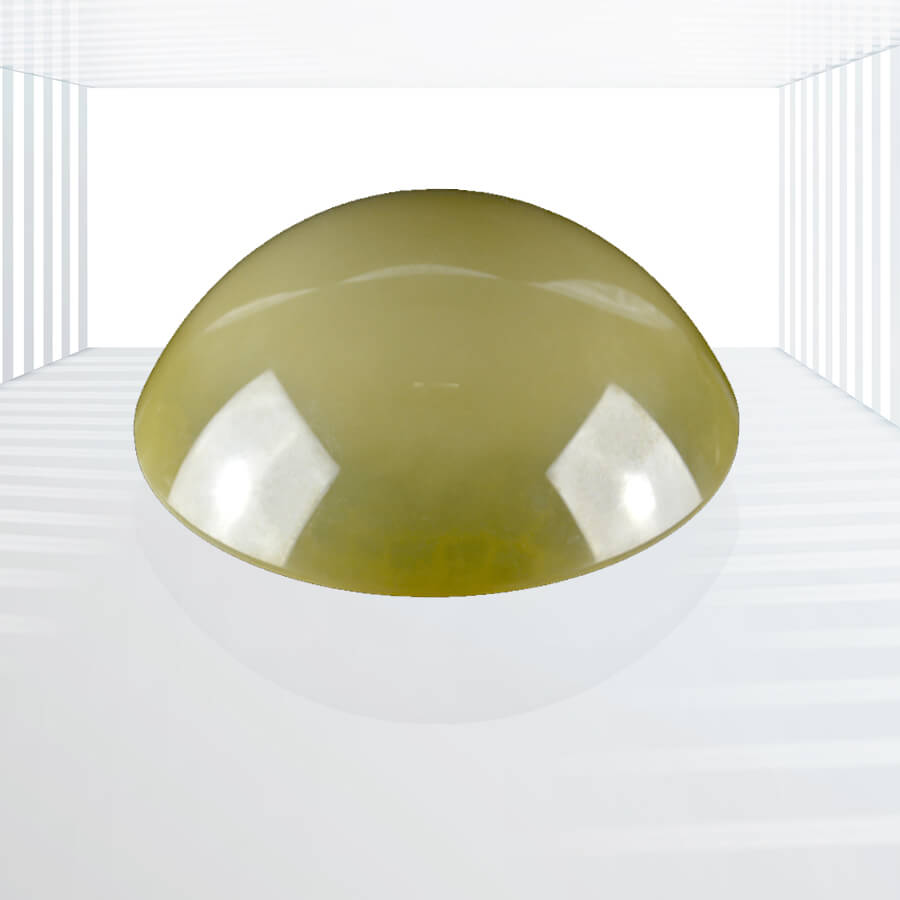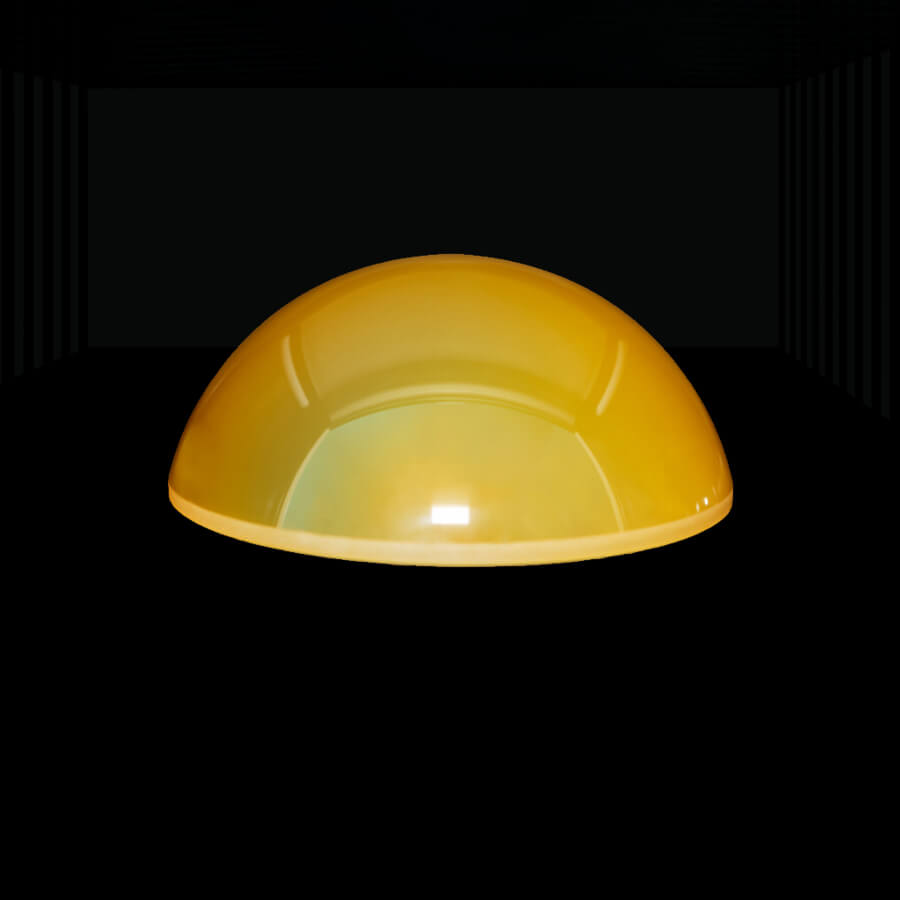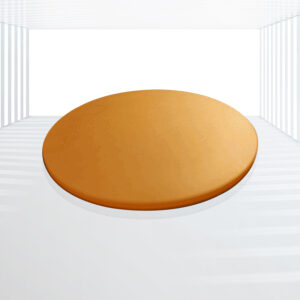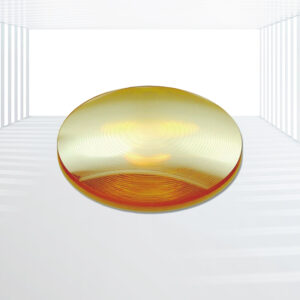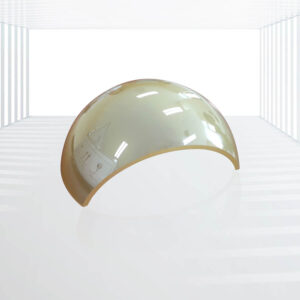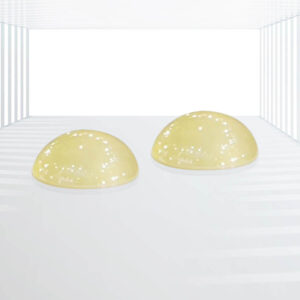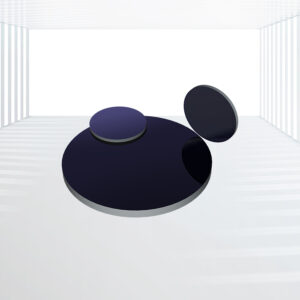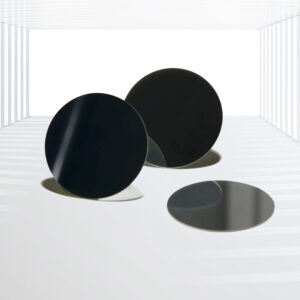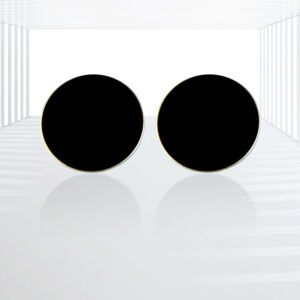CVD ZnS and Multispectral ZnS Domes
Fabrication Technique: Chemical Vapor Deposition (CVD) is a method used to grow thin films or layers of materials onto a substrate under controlled conditions. It allows for precise control over material properties and thickness.
Maximum Diameter: Up to 280mm, indicating large-scale optical components.
Thermo-mechanical Properties: Excellent mechanical strength and endurance in hostile environments, suggesting durability and reliability.
Transmission Range: Wide transmission range from 7.5μm to 12μm (micrometers), which corresponds to the long-wave infrared (LWIR) region. High transmission rates in this range are crucial for infrared imaging and other applications.
Applications: Ideal for infrared imaging systems, missile guidance systems, scientific instruments, and other applications requiring precise infrared optics.
CVD (Chemical Vapor Deposition) Zinc Sulfide (ZnS) represents a significant advancement over traditional methods such as Hot-pressed Zinc Sulfide, particularly in applications requiring precise optical and mechanical properties. The CVD process involves depositing uniform, high-quality ZnS films onto substrates using gaseous precursors, ensuring consistent composition, thickness, and overall quality. This method offers excellent optical transmittance, especially in the critical 10.5~12μm wavelength range crucial for infrared (IR) applications, outperforming Hot-pressed ZnS. CVD ZnS also demonstrates exceptional mechanical properties, including twice the fracture strength of ZnSe, making it highly durable in demanding aerospace and defense environments.
Transmission Range:
CVD ZnS: It has a more limited transmission range compared to Cleartran, typically around 0.4 to 5.5 μm. It is used primarily in the mid-wave infrared (MWIR) range.
Multispectral Zinc Sulfide (Cleartran): This undergoes a post-deposition hot isostatic process that expands its transmission range to cover wavelengths from 0.4 to 12 μm (micrometers). This extended range makes it suitable for a wider variety of applications where both visible and infrared light are important.
Hardness and Ruggedness:
CVD ZnS: It is harder compared to Multispectral Zinc Sulfide. This hardness makes it more resistant to scratches and wear, which can be advantageous in certain optical applications.
Multispectral Zinc Sulfide (Cleartran): While not as hard as CVD ZnS, it is still rugged and durable, especially compared to Zinc Selenide (ZnSe), which is softer and less durable.
Kingwin Optics is a professional manufacturer of CVD ZnS Domes and Multispectral ZnS Domes. Applications for Our CVD and Multispectral ZnS domes are diverse, encompassing infrared imaging systems, missile guidance, and scientific instruments that demand high optical clarity and minimal absorption/scattering in the IR spectrum. The controllable CVD process ensures uniform deposition, leading to consistent optical and mechanical properties across all applications, particularly beneficial in aerospace and defense sectors.
Specifications:
| Materials | Hot-pressed ZnS |
| Diameter Range | ~ 280mm |
| Thickness Tolerance | +/-0.2mm (Optional:+/-0.1mm and +/-0.05mm) |
| Surface Quality | 60/40 S/D |
| Chamfer | 0.1~0.3mmx45degree |
| Coating | AR coating |
| Irregularity (delta N) | customized |
| Fringes (N) | customized |
Physical and Optical Properties:
| Transmission Range | 7.5 to 12μm |
| Knoop Hardness | 210 |
| Melting Point | 1830°C |
| Youngs Modulus | 80GPa |
| Bending Strength | >100MPa |
| Density | 4.08g/cm3 |
| Thermal Expansion | <9×10-6K-1(~600℃) |
| Refractive Index | 2.2004 |
| Transmittance | >70%(8-12μm) |
| Specific Heat | 0.468J/(g*K) |
| Poisson Ratio | 0.25-0.36 |
| Thermal Conductivity | 19W/(m*K) |
Comparison between the physical properties of CVD Zinc Sulfide and Hot-pressed Zinc Sulfide. The chart demonstrates that CVD ZnS has much better mechanical robustness, thermo-mechanical steadiness, and optical transmission rate.
| Material | CVD Zinc Sulfide | Hot-pressed Zinc Sulfide |
| Density (g/cm^2) | 4.08 | 4.09 |
| Melting Point (°C) | 1830 | 1830 |
| Youngs Modulus (GPa) | 80 | 74.5 |
| Poisson Ratio | 0.25-0.36 | 0.29 |
| Specific Heat (J/g*k) | 0.468 | / |
| Thermal Conductivity (W/m*K) | 19 | 17.2 |
| Thermal Expansion Coefficients | <9×10^-6/K(~600°C) | 6.×10^-6/K to 7.9×10^-6/K(~600°C) |
| Transmission Rate | >70%(8-12μm) | >66%(7.5-10.5μm) |
| Refractive Index | 2.2004 | 2.1986 |
| Bending Strength | >100 | >90 |
| Knoop Hardness | 210 | 210 |

